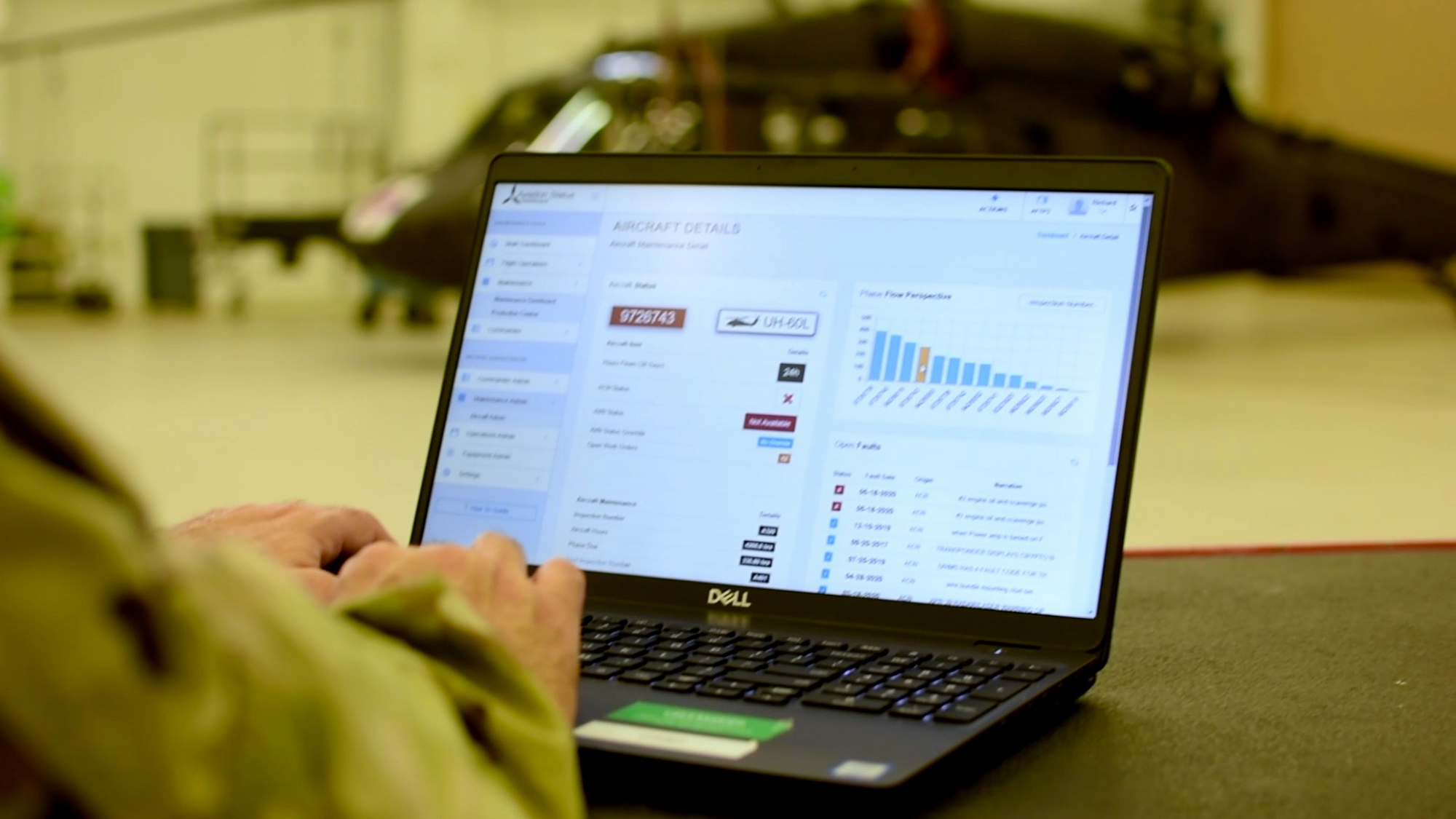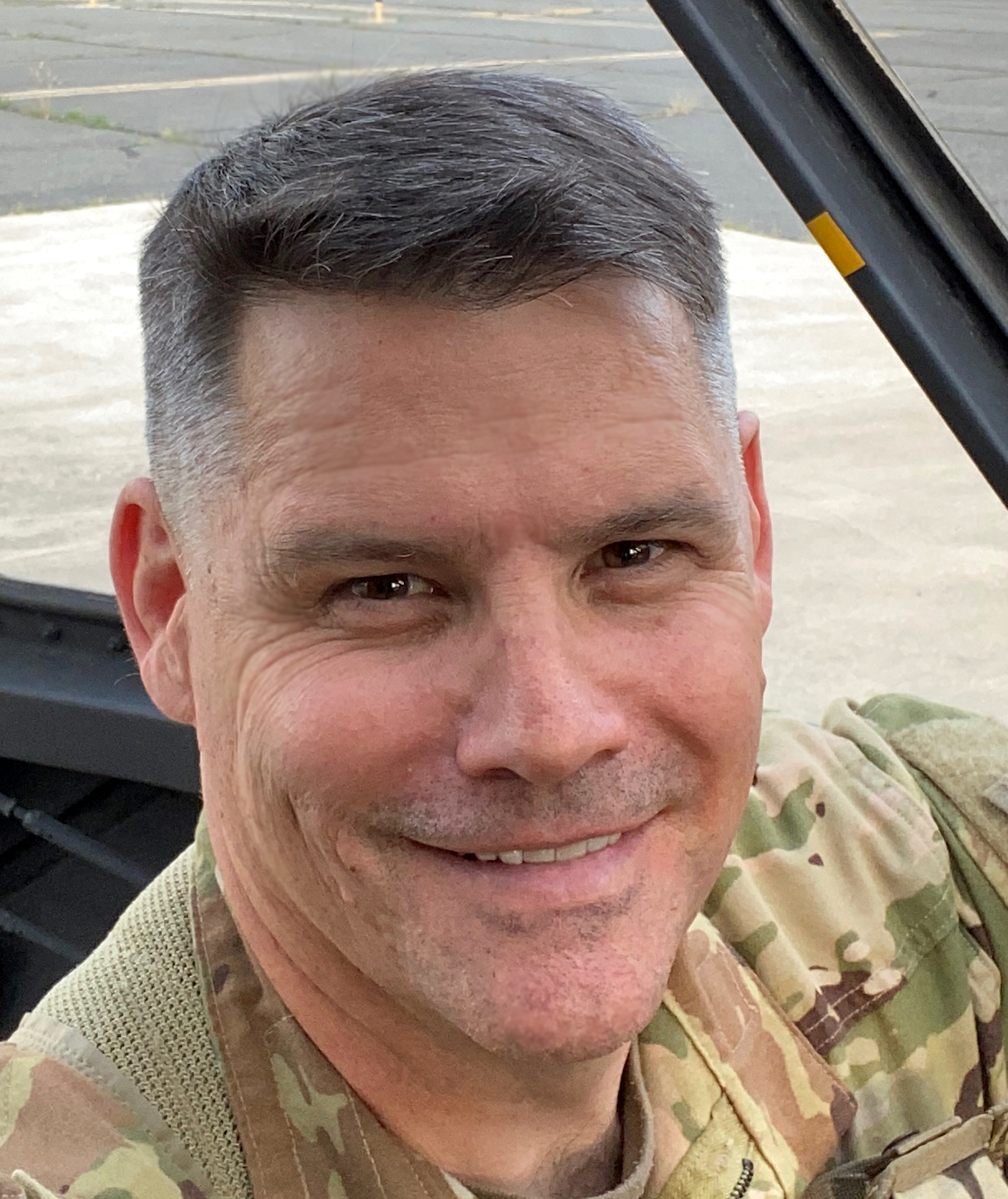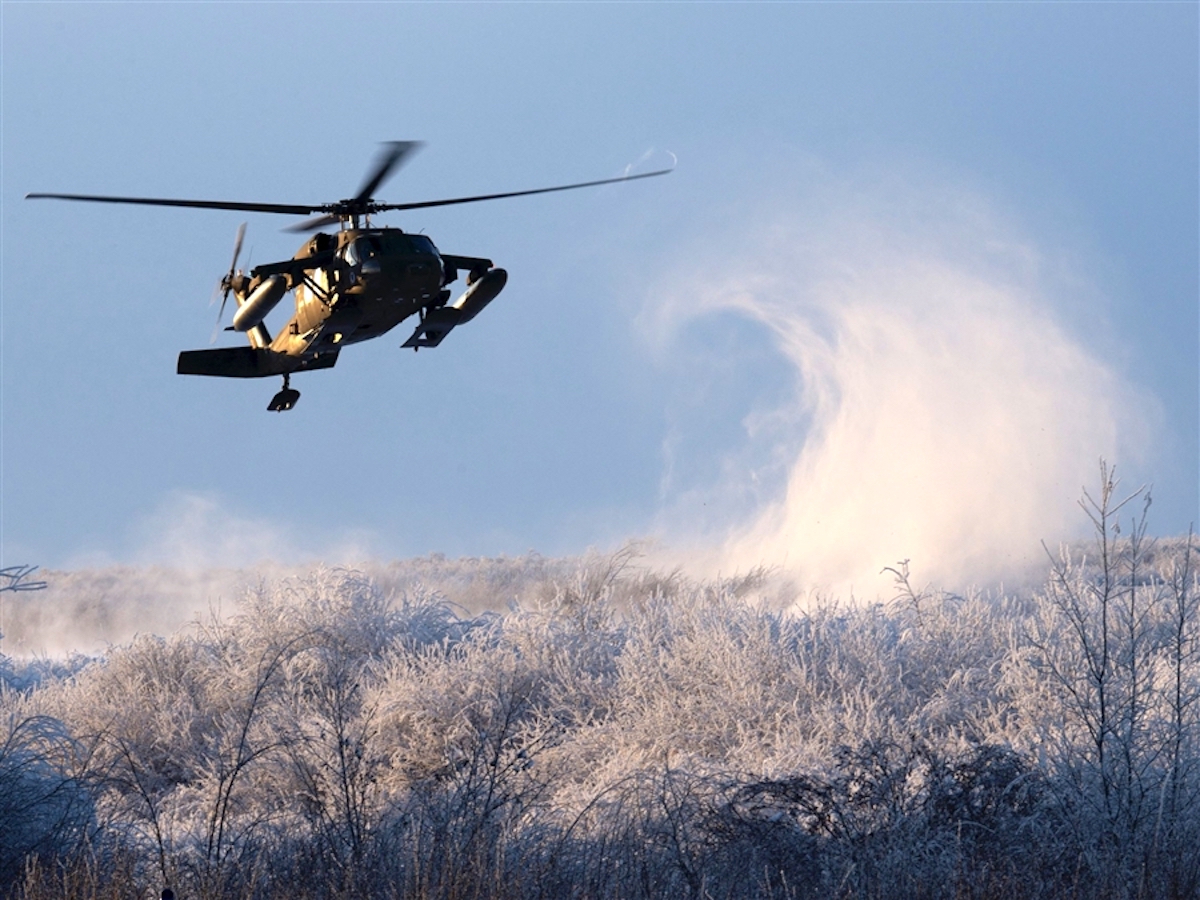While massive wildfires continue to rage across California lands at a never-before-seen pace, the state’s National Guard is filling the skies with air tankers and helicopters to suppress the fires and rescue people trapped amid billowing smoke and fast-moving flames.
A veteran-owned tech company based in Reno is helping Cal Guard keep track of their aircraft.
Lulius Innovation, which provides software and services to military organizations, has developed the Aviation Status Dashboard (ASD), designed to fill gaps within the National Guard Army Aviation program.
In a nutshell, the software focuses on automating workflows, giving organizations such as Cal Guard a real-time view of everything from aircraft readiness to flight crew status to budget management.
“The software is really targeted at helping the senior leadership see what’s available with the aircrew,” Rich Ferguson, Lulius founder and Chief Technology Officer, said in a video interview with the NNBW. “There are a lot of requirements for aircrews to maintain proficient and current aircraft. And there are a lot of requirements to keep aircraft in the air, with maintenance, fuel, funding, you name it. They just never had a consolidated look at any of that.”
It’s a solution that’s been especially helpful for the Guard’s firefighting efforts in California. As of Sept. 10, countless blazes had already blackened a record 2.3 million acres this year in the Golden State, according to Cal Fire.
With wildfire season far from over, Lulius Innovation has worked in recent weeks to add even added data points to the dashboard, per Cal Guard’s request, Ferguson said.
 A member of the National Guard looks at the details of the helicopter in the background using Lulius Innovation’s Aviation Status Dashboard.
A member of the National Guard looks at the details of the helicopter in the background using Lulius Innovation’s Aviation Status Dashboard.
“One of the things they were asking for is they needed to know where all of their water buckets for firefighting were,” he continued. “They knew they had some in Sac and Stockton and Fresno and LA. But they needed to know the total amount and which were broken and which weren’t. And within a few hours, we had that data to them.”
The NNBW reached out to Cal Guard’s public affairs office for comment on its use of the Aviation Status Dashboard, but did not receive a response.
The Alaska Army National Guard (AKARNG), meanwhile, is using Lulius Innovation’s ASD for more than just fighting wildfires. The state has utilized the dashboard in its response to the coronavirus pandemic.
In an
April report published in Nevada Today, the University of Nevada, Reno’s news and information website, Col. Bob Kurtz, AKARNG’s State Army Aviation Officer, said that the “ASD has ten-fold helped us to see ourselves and make it easier to have others see our availability and capability and shape our potential aviation patient-transport response to COVID-19.”
Along with California and Alaska, Lulius Innovation’s dashboard is currently being used in Montana and Idaho, Ferguson said, adding that three other states are in the approval process. For now, Nevada is not on the list.
 Rich Ferguson, founder and CTO of Lulius Innovation, is a UNR graduate and a longtime colonel in the National Guard.
Rich Ferguson, founder and CTO of Lulius Innovation, is a UNR graduate and a longtime colonel in the National Guard.
“They’re all really big firefighting states,” he said. “They needed a better view of what’s happening during their fires. Necessity is the best form of invention.”
PATH TO ENTREPRENEURSHIP
Ferguson saw the need for his invention through years in IT roles in the military and federal government.
A graduate of UNR and longtime colonel in the National Guard, Ferguson has worked as deputy CIO for the U.S. Department of Defense in Nevada; chief of engineering, infrastructure and support for the Executive Office of the President at the White House; and CIO for the Federal Labor Relations Authority.
That experience propelled Ferguson to being selected to participate in a national security fellowship at Harvard University from 2015-2016 — a year when Ferguson’s vision for his aviation software truly began to crystalize.
Ferguson said he was particularly inspired by Gen. Joseph Lengyel, then the 28
th Chief of the National Guard Bureau, who led a discussion on his three priorities for the Guard’s future. His third priority was innovation, remarking that the Guard needed innovative minds more than ever.
It was almost as if Gen. Lengyel was speaking directly to Ferguson.
“I decided in that moment that I was going to start writing this code and really learning on my own to make this application,” recalled Ferguson, who spent the year writing code in his kitchen in Cambridge.
The coding continued after Ferguson and his family returned home to Reno later in 2016.
Soon after, with his aviation software ready to take flight, Ferguson “took the jump” and launched Lulius Innovation in 2018. Fittingly, he settled his startup in the UNR Innevation Center.
 An Alaska Army National Guard UH-60 Black Hawk assigned to the National Guard Readiness Center in Bethel, Alaska. The Alaska Army National Guard is one organization using Lulius Innovation’s dashboard technology.
An Alaska Army National Guard UH-60 Black Hawk assigned to the National Guard Readiness Center in Bethel, Alaska. The Alaska Army National Guard is one organization using Lulius Innovation’s dashboard technology.
“We’re in the center of where people want to work,” Ferguson said of Reno, a fast-growing tech hub. “I can’t even imagine how I’d be functioning without the support through the Innevation Center and our local leaders who’ve made this environment. It’s like a garden. They’ve nurtured it and now it’s growing, and I’m really glad to be part of it.”
In time, Lulius Innovation presented its tech solution to its first customer, Cal Guard. Ferguson knew he was onto something when, after demonstrating the software’s flight scheduling features, Cal Guard members stood up and high-fived each other.
“You don’t see Army soldiers get up and high-five unless it’s pretty good,” Ferguson added.
READY FOR TAKEOFFCurrently, Lulius Innovation has eight full-time employees, with plans of growing to 16 over the next year, said Ferguson, who hopes to hire as many Nevadans as possible.
Because Lulius Innovation has “little overhead” and plenty of revenue coming in, the startup has not had to raise capital. Ferguson, who did not want to disclose revenue figures, took the bootstrap path and has not looked back.
“We have at least three years of runway,” Ferguson said. “And we’re not going to quit, we’re just going to keep getting approvals and get further and further.
“I’m confident that the leadership within the Army aviation enterprise will see the attractiveness of the software and how well it works,” he continued. “And after that happens, the aperture opens significantly, and I see us really moving forward going from a startup to a bonafide established company that’s worth its weight because we have a product that’s viable.”
Go to
www.avnstatus.com to view the company’s Aviation Status Dashboard.
 A member of the National Guard looks at the details of the helicopter in the background using Lulius Innovation’s Aviation Status Dashboard.
A member of the National Guard looks at the details of the helicopter in the background using Lulius Innovation’s Aviation Status Dashboard. Rich Ferguson, founder and CTO of Lulius Innovation, is a UNR graduate and a longtime colonel in the National Guard.
Rich Ferguson, founder and CTO of Lulius Innovation, is a UNR graduate and a longtime colonel in the National Guard. An Alaska Army National Guard UH-60 Black Hawk assigned to the National Guard Readiness Center in Bethel, Alaska. The Alaska Army National Guard is one organization using Lulius Innovation’s dashboard technology.
An Alaska Army National Guard UH-60 Black Hawk assigned to the National Guard Readiness Center in Bethel, Alaska. The Alaska Army National Guard is one organization using Lulius Innovation’s dashboard technology.
Comments
Use the comment form below to begin a discussion about this content.
Sign in to comment